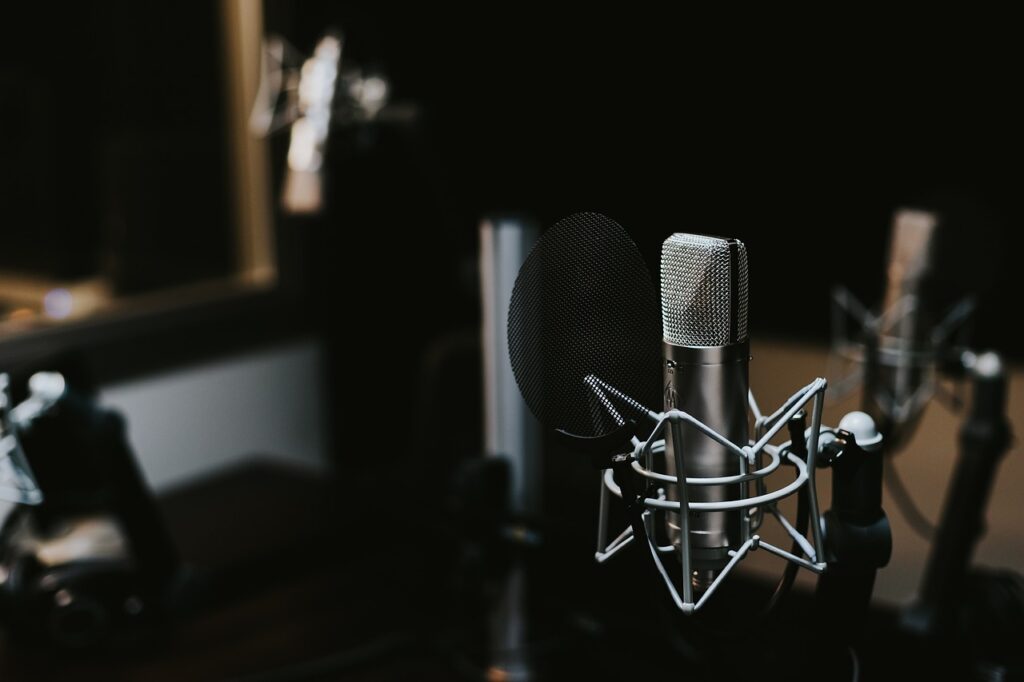If you are a musician, or a podcast, or a voice-over artist, you naturally want a space where you can express your artistic self. If you cannot do it outside your house, then why not use your garage?
Many music enthusiasts and professionals dream of having a recording studio at home. The garage, often an underutilized space, presents a practical solution for this ambition. With proper planning, design, and execution, a standard garage can be transformed into a fully functional recording environment. This article explores the feasibility, benefits, and considerations involved in converting a garage into a recording studio.
The Basics
Before starting construction or purchasing equipment, it is essential to understand what a recording studio requires. A successful studio must be able to manage both external noise and internal sound behavior. This means taking control over soundproofing, acoustic treatment, ventilation, lighting, and the layout. These elements directly affect the clarity of your recordings and your ability to mix accurately. Starting without a clear understanding of these factors could result in poor sound quality and wasted resources. Take time to identify your recording goals and the type of music or audio you will be working on, as this can influence design decisions.
Evaluating the current condition of your garage will help determine how much work will be necessary. Consider the existing structure. Look at the materials in the walls, ceiling, and flooring. Pay attention to gaps in doors or windows and listen for outside noise. Garages are not originally intended to be acoustically controlled spaces. They are often built with minimal insulation and may lack proper electrical or HVAC systems. Taking stock of what already exists helps create a realistic renovation plan and budget. It also reveals whether additional permits or professional assistance might be needed.
Soundproofing the Space
Garages are not typically designed to isolate sound. Thin walls, unsealed doors, and uncovered windows allow sound to travel freely in and out of the space. This becomes a serious issue when trying to record music or audio that demands a quiet and controlled environment. Without proper soundproofing, neighbors may complain about the noise, and external sounds like traffic, rain, or voices could ruin a perfect take. To start addressing this, you must locate every possible sound leak. This includes door frames, vents, and any other opening that allows air—and therefore sound—to pass through.
Effective soundproofing involves layering materials to block and absorb sound waves. This often includes installing dense insulation in the walls, adding mass-loaded vinyl barriers, using resilient sound channels, and upgrading doors and windows. A thick solid core door and double-paned glass will help seal out unwanted noise. One advanced technique used in professional studios is the creation of a room within a room. This involves constructing an isolated frame inside the garage that is not physically connected to the outer walls. It adds cost and complexity but offers superior sound isolation. The result is a quieter space with fewer interruptions and better sound integrity.
Controlling Acoustics Inside
Soundproofing stops unwanted noise from entering or escaping, but acoustic treatment manages sound behavior within the room. Hard surfaces like concrete walls or tile floors reflect sound waves, causing echoes, flutter, and reverberations that can ruin a recording or mix. Musicians and audio engineers depend on clear and balanced sound to make accurate judgments about tone and texture. Even the best microphones and software cannot compensate for poor room acoustics. Fortunately, treating the interior of a space is typically easier and more affordable than structural soundproofing.
Acoustic panels, bass traps, and diffusers help to absorb or scatter sound waves in a controlled manner. These treatments reduce reflections, tame bass frequencies, and create a flatter sound profile. Panels can be mounted on the walls and ceiling, especially at reflection points where sound bounces between surfaces. Adding rugs or soft fabric coverings also improves acoustics by absorbing high frequencies. The goal is to create a neutral listening environment where recordings sound natural and mixes translate well across different playback systems. Paying attention to the shape and size of the room will also guide placement and selection of acoustic materials.
Planning the Layout
A functional studio layout includes a control room, live recording area, and sometimes an isolation booth. In a garage, space may be limited, so careful planning is essential. Dividing the area using partitions or soundproof curtains can separate different functions without extensive remodeling. The placement of instruments, microphones, monitors, and furniture affects workflow and acoustics.
Electrical Considerations
Recording equipment consumes electricity and must be supported by a reliable power supply. Garages often lack the necessary outlets or capacity. Hiring a licensed electrician to install additional circuits, grounded outlets, and surge protection will ensure safety and performance. Adequate lighting and backup power solutions also contribute to a professional setup.
Climate and Ventilation
Garages can be hot in summer and cold in winter. Temperature and humidity fluctuations can damage sensitive audio gear. Installing insulation, heating, and cooling systems will create a stable climate. Ventilation must be considered as well. Passive vents, HVAC systems, or quiet exhaust fans can circulate air without introducing noise.
Choosing the Right Equipment
Outfitting the studio requires selecting equipment based on goals and budget. Basic needs include a computer, digital audio workstation software, audio interface, studio monitors, microphones, and headphones. Furniture such as a desk, chairs, and storage solutions adds comfort and efficiency. Prioritizing quality and functionality over brand names often results in better long-term value.
Wiring and Connectivity
A professional studio demands organized wiring for audio, power, and data. Cables should be neatly routed and labeled to prevent interference and confusion. Using cable management tools such as ties, sleeves, and channels improves safety and appearance. Ensuring internet connectivity supports online collaboration, streaming, and software updates.
Aesthetic Considerations
Visual design plays a role in the comfort and inspiration of a creative space. Painting the walls in calming or energizing colors, installing creative lighting, and adding decorative touches can boost morale and creativity. Incorporating personal style, musical themes, or memorabilia adds character and makes the studio a place of pride.
Noise Management Outside the Studio
To maintain good relations with neighbors or household members, addressing external noise concerns is crucial. Installing sound barriers, landscaping, or communicating studio hours can help minimize disturbances. Taking responsibility for noise management demonstrates professionalism and respect.
Budgeting and Cost Management
Transforming a garage into a studio can vary in cost depending on size, goals, and material choices. Creating a detailed budget helps track expenses and prioritize investments. Repurposing existing items, buying used equipment, or completing parts of the project in stages can control costs. Seeking advice from professionals or online communities can also provide cost-saving tips.
Permits and Legal Considerations
Local building codes, zoning laws, and homeowner association rules may apply to garage renovations. Before starting construction, it is advisable to check regulations and secure necessary permits. If the studio will be used commercially, additional requirements may exist. Compliance ensures long-term stability and avoids legal complications.
Timeframe for Completion
Depending on complexity, converting a garage can take weeks to months. Setting realistic timelines and milestones keeps the project on track. Delays can arise from material shortages, contractor schedules, or unforeseen structural issues. Patience and flexibility are key to managing the process effectively.
Testing and Optimization
Once construction is complete and equipment is in place, testing the studio setup is essential. Running trial recordings, adjusting monitor placement, and evaluating acoustics help refine the environment. Continual tweaking based on actual use improves results over time. Recording test sessions with different instruments or genres can highlight strengths and weaknesses.
Creating a Comfortable Work Environment
Spending long hours in the studio requires comfort. Ergonomic furniture, controlled lighting, and convenient storage make the space inviting and functional. Adding plants, artwork, or mood lighting enhances atmosphere. A comfortable space contributes to productivity and enjoyment.
Potential Challenges and Solutions
Converting a garage into a studio can present challenges such as limited space, acoustic anomalies, or structural limitations. Solutions include modular furniture, creative acoustic treatments, or partial conversions. Flexibility in design and problem-solving attitude can overcome most obstacles. Consulting with experienced builders or acousticians can prevent costly mistakes.
Long-Term Maintenance
Maintaining the studio involves regular equipment checks, cleaning, and environmental monitoring. Dust can damage gear and reduce performance. Periodically testing electrical systems, ventilation, and acoustics ensures longevity. Updating software, replacing worn components, and reorganizing the space keeps it fresh and functional.
Benefits of a Garage Studio
Having a dedicated space at home allows for convenience, privacy, and creative freedom. It eliminates rental fees, travel time, and scheduling conflicts. Artists can record at their own pace, experiment freely, and develop their craft in a personal environment. It can also serve as a content creation hub for podcasts, videos, or online collaborations.
Professional and Personal Growth
A home studio can support professional ambitions or personal hobbies. It encourages learning about recording techniques, mixing, mastering, and music theory. Over time, it can evolve into a source of income, a platform for collaborations, or a training ground for aspiring musicians and producers.
Conclusion
Turning a garage into a recording studio is an achievable and rewarding project. With proper planning, investment, and dedication, any standard garage can become a space that inspires creativity and supports musical goals. The journey from bare concrete to a polished studio space offers not just practical benefits but also a deep sense of accomplishment. It opens the door to endless musical possibilities right at home.

